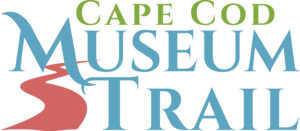When you think of Cape Cod what comes to mind?
The feel of shifting sands between your toes?
The smell of seaweed and salt spray?
The sight of sea shells strewn on the shore?
The sound of smooth-sliding, ocean surf?
The Cape, a natural masterpiece, has a remarkable diversity of both freshwater and saltwater habitats for visitors to experience.
In the Cape Cod Museum of Natural History’s aquarium, you can discover the exciting nature of marine science in nearby ponds, streams, creeks, marshes, beaches, tidepools and Cape Cod Bay.
Remember, Cape Cod is basically a pile of clay, sand, gravel and boulders formed during the last Ice Age. During the thousands of years the glaciers retreated dropping massive chunks of ice that eventually formed ponds. Today, water from these ponds flows into our Stony Brook back yard and downstream to the Bay.
You’ll learn the importance of our salt marsh ecosystem that supports a diversity of plant and animal life and our kettle ponds groundwater that is the Cape’s sole source aquifer.
Like Cape Cod, our aquarium is ever-changing and exciting. Here is a partial list of the Cape Cod creatures you will find although it is important to remember that the species exhibited can change very often:
- American Eels
- Lobsters
- Painted Turtles
- Box Turtles
- Diamond Backed Terrapin Turtles
- Spider Crabs
- Mummichogs
- Oyster Toadfish
- Moon Jellies
- Four Spined Sticklebacks
- Chained Dogfish Sharks
- Sea Ravens
- Striped Bass
…and many other fish and mollusks common to our waters.
The aquarium is located on the lower level of the museum in Brewster. For more information, click here.




Leave A Comment